The Complete Baby Proofing Checklist for Your New Home
Whether your baby is months or minutes from getting into everything in your home, baby proofing is essential to keep your little one safe as they grow and explore. Discovery is integral to development because it helps your child learn about the world around them. Children are naturally curious and love to learn, so they must do so in a safe environment.

Tackling the whole house may seem daunting, so we broke down our top baby proofing tips for your new home, room by room:
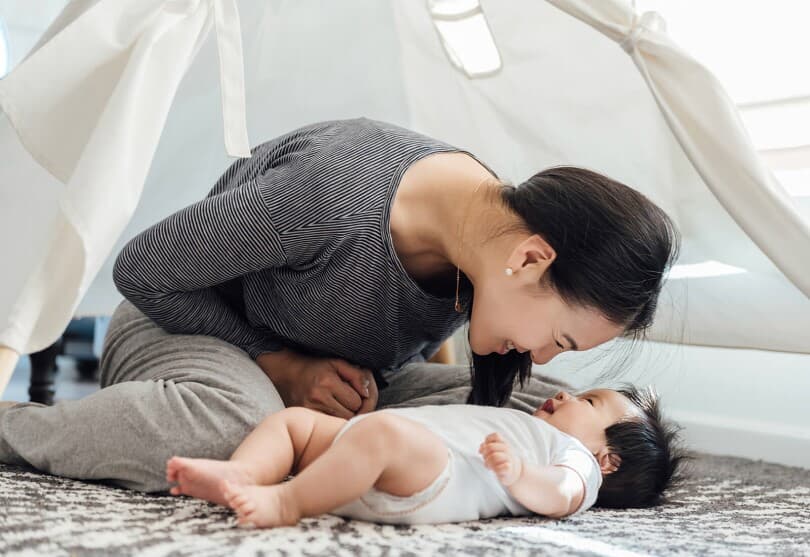
How to Baby Proof the Whole House
Baby proofing the whole house ensures basic protections are in place everywhere.
1. Cover electrical outlets
Outlets are at baby’s level, so they’re a tempting danger for fingers and other objects. To prevent this, place outlet covers, caps, or plugs in all outlets not in use. Keep electrical cords out of sight so they’re not easily pulled or unplugged.
2. Install doorknob covers
Doorknob covers prevent little hands from grasping the knob tight enough to turn it. These are great for rooms you don’t want your baby or toddler to access, such as the garage or laundry room.
3. Soften sharp edges and corners
Apply stick-on, removable corner cushions to prevent bruises and bumps from low furniture edges like your coffee table or higher hazards such as your kitchen island.
4. Secure heavy furniture
Use furniture mounts to attach pieces to the wall. A bookcase is an obvious item with the risk of tipping over, but take a second look for any drawers that can be pulled out and climbed up, such as on a dresser.
5. Utilize baby gates
Invest in baby gates wherever you need them. If your home has more than one level, you’ll want to place gates at the top and bottom of the stairs to prevent any falls down or unsupervised trips up. You can also use baby gates to keep your little one away from anything you don’t want them exposed to, like the fireplace or across the door to your home office.
6. Remove obvious hazards
Remove and put away anything hazardous (indoor plants, small candy) or breakable (picture frames, glass bowls). Keep batteries safely stored away, including those in use, such as TV remotes, car key fobs, and calculators. Coin or button batteries are especially dangerous, so ensure they’re safely disposed of and stored out of reach.
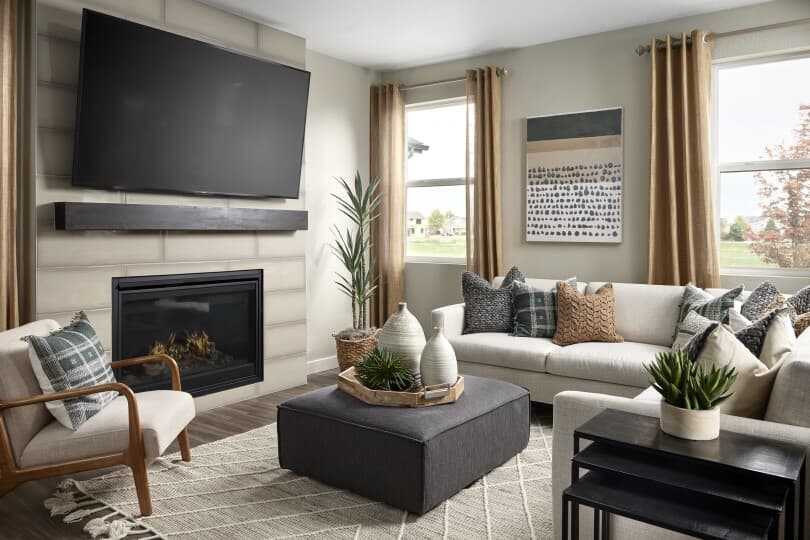
How to Baby Proof the Living Room
1. Cover sharp edges of furniture with corner guards
In a typically cozy room, there may be unexpected hazards for your little one. Ensure sharp edges like the coffee or side tables have protection to prevent any painful bumps or scrapes. If you have a fireplace, cover the hearth with padding as well.
2. Check for cords
Tie up electrical and window cords so they’re far from baby’s reach. If your budget allows, buy new window treatments with kid-safe wands instead of cords.
3. Use caution with the fireplace
Never leave your baby unsupervised in a room with a lit fireplace. Accidents can happen in mere seconds. Screen or glass doors do not provide sufficient protection as the glass can heat up to dangerous temperatures, fireplace screens can tip over, and nearby fireplace tools are often heavy and sharp.
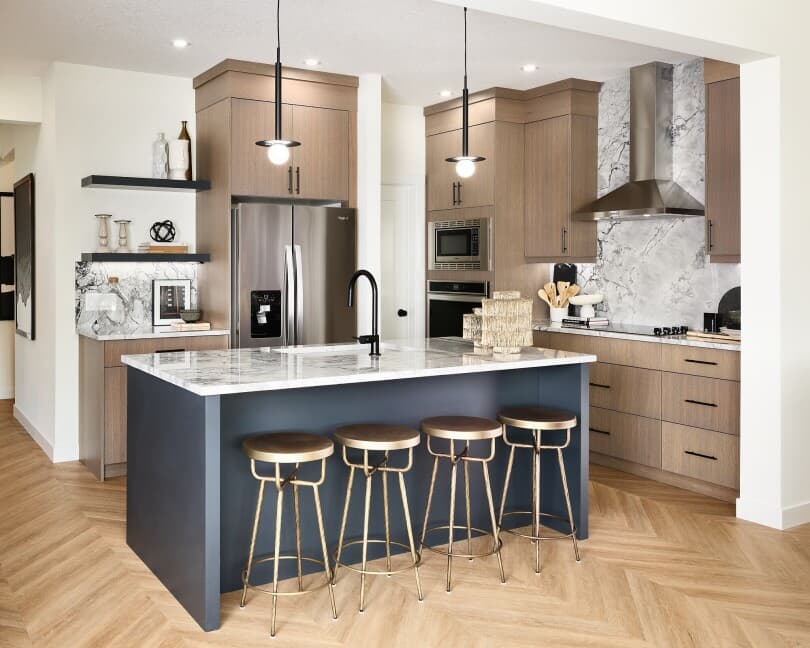
How to Baby Proof the Kitchen
1. Install cabinet locks or latches
Install a lock on the under-sink and lower cabinets where cleaners, bleach, and other dangerous liquids are typically stored.
2. Store dangerous items up high
You can store those hazardous household items up high where little hands can’t reach them for extra protection. Move knives and appliances with sharp edges (food processor, cheese grater, vegetable peeler, blender) to an upper cabinet.
3. Use stove knob covers
Safety covers for stove knobs can keep your child from turning them on. Babies’ toys often have knobs to help develop dexterity which makes turning any knob very tempting. Placing covers over the stove knobs reduces the risk of toddlers being able to grip, much less turn these knobs.
4. Engage in safe kitchen practices
When cooking, use the back burners with your pan handles turned in so they aren’t reachable by small hands. Don’t let your baby or toddler play with pots and pans. It may seem like a cute social media moment, but they don’t understand the difference when it’s a toy on the ground but dangerous when it’s on the stove.
5. Unplug appliances when not in use
If your kitchen storage space is spoken for and there’s no choice but to have appliances on the counter, keep them unplugged when they’re not in use and the cords out of reach.
6. Clear the edges
Don’t store anything at the edge of your counters. Keep hot dishes, cleaning liquids, and breakable items like glassware out of reach or in a secure cabinet. Use placemats instead of tablecloths. Tablecloths are easy to pull and send heavy plates and sharp knives flying.
7. Create a “safe” drawer or shelf they can access
Keep brightly colored plastic bottles or containers you deem safe in an accessible spot so baby has entertainment while you are preparing meals.
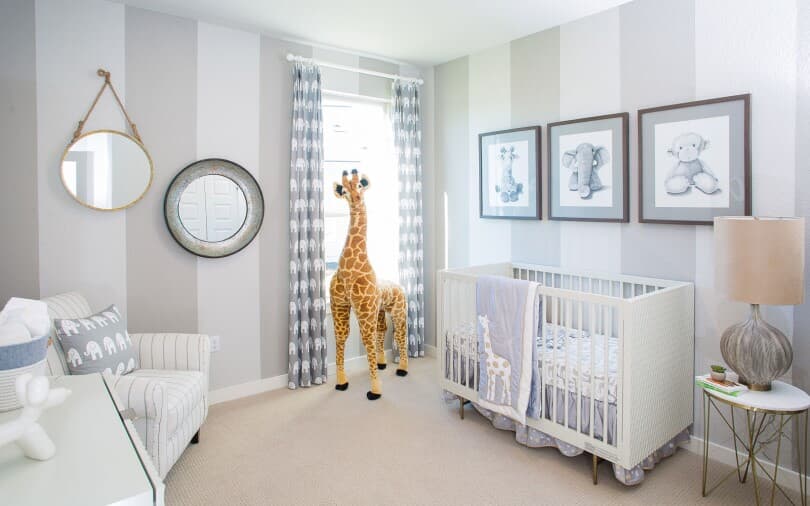
How to Baby Proof the Nursery
1. Ensure your baby’s crib is a safe sleep environment
Use a crib or playpen with a firm mattress and tightly fitted sheet. Remove loose bedding, pillows, crib bumpers, or stuffed animals from the crib. Sure, it may look cute, but these items increase the risk of suffocation.
2. Minimize artwork hung over the crib and ensure it is lightweight
You don't want to think about an earthquake or hanging hardware failure, but it can happen, so don’t hang anything heavy or sharp directly above the crib.
3. Use care around the changing table
Look for a sturdy changing table with a two-inch guardrail on all sides. Use a changing pad with a concave middle. Even if you use the safety strap during changes, always keep one hand on your wiggly baby. Never leave your baby unattended on the table. Keep diapers and changing supplies close by but out of reach for your little one.
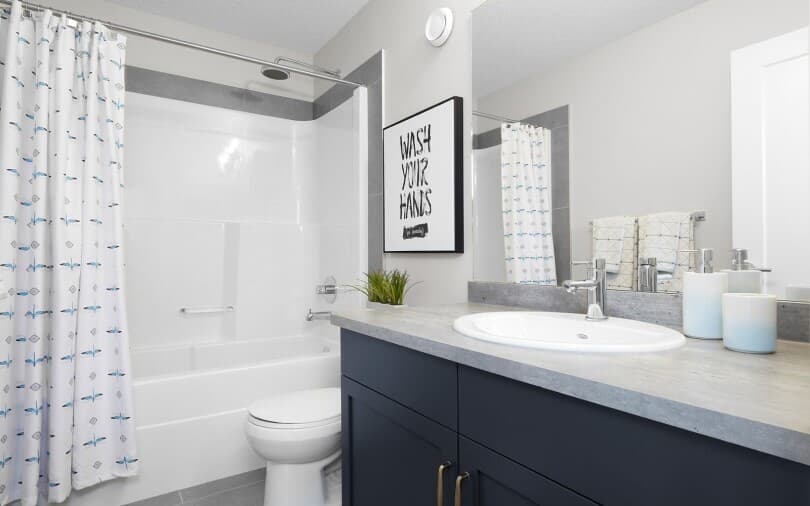
How to Baby Proof the Bathroom
1. Install cabinet locks
Keep medicines and other hazardous items out of reach or in a locked cabinet. This includes cosmetics, shampoos, soaps, mouthwash, toothpaste, and small appliances like your hair dryer or flat iron.
2. Use a non-slip mat in the bathtub or shower
3. Check the tub temperature
Set your water heater at 120 degrees Fahrenheit or less, or install an anti-scalding device on your faucets to prevent burns.
4. Install a toilet lock
Water is intriguing to little ones. A safety latch prevents your child from opening the toilet lid and falling in and keeps toys from going for a “swim.”
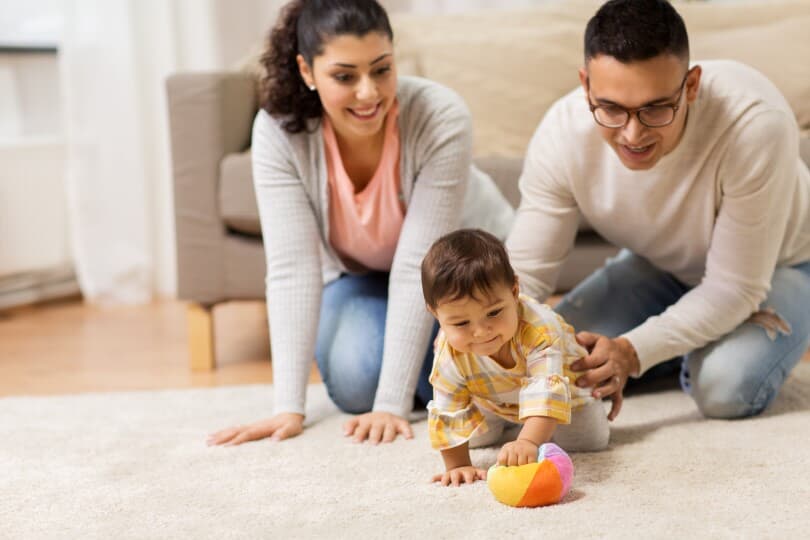
Remember, no matter how well you baby proof a house, there’s no substitute for eagle-eyed supervision. Kids can be surprisingly creative when it comes to getting into mischief, so watch what they’re drawn to and ensure they can explore it safely.
Check out the Brookfield Residential blog for more design advice, homebuying insights, mortgage tips, and more, including household cleaning tasks you may have forgotten and how to upcycle furniture. You can also explore where we build and connect with our sales team when you’re ready to learn more. We’ll be expecting you!

